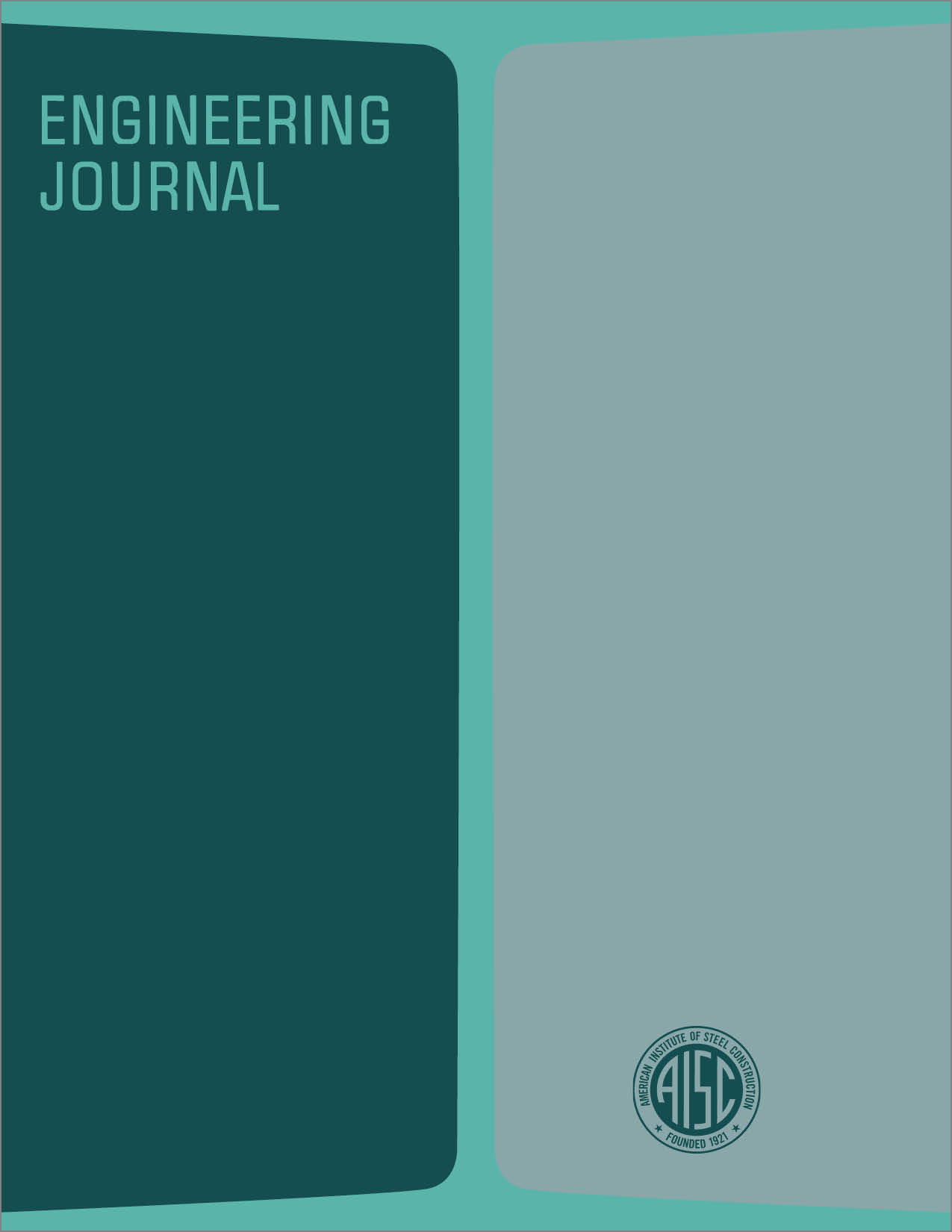Maximum A325 Bolt Loads at a Glance
DOI:
https://doi.org/10.62913/engj.v4i4.85Abstract
Some designers and detailers have voiced a need for a method that enables a more rapid and clearer determination of the most efficient load capacity for high strength boltsused for single and double shear connections on thin supporting webs and similar material where bearing may control. In friction-type connections, load capacities are not affected by thickness of material or by shear planes intersecting bolt threads; therefore, the bolt capacities are constant. This paper suggests a technique that is advantageous in building-type structures where both friction and bearing-type connections can be used. Too often, sight is lost of the most efficient, economical solution. The problem is centered on a rather narrow range of supporting material thicknesses (webs, etc.) where the several limitations on bolt capacities seemingly converge. Current specifications governing usage of high strength bolts contain four determinants of bolt capacity, exclusive of applied tension. First is an allowable "frictional" shear where the concept of a friction-type joint is employed. The other three determinants, pertaining to bearing-type connections, are (1) an allowable shear on the nominal cross-sectional area of the bolt when threads are in a shear plane, (2) a higher allowable shear on the nominal cross sectional area of the bolt when threads are excluded from shear planes, and (3) an allowable bearing on the projected bolt area of the supporting member or connections detail material.

